EMPIRE OF CHAOS
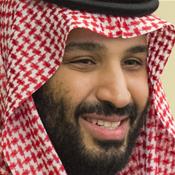
FRIENDLY DICTATORS
Dictators and authoritarian
governments that the United States helped put in power or supported,
most often by overthrowing democratically-elected governments
or suppressing populist movements.

Many of the world's most repressive
dictators have been friends of America. Tyrants, torturers, killers,
and sundry dictators and corrupt puppet-presidents have been aided,
supported, and rewarded handsomely for their loyalty to US interests.
Traditional dictators seize control through force, while constitutional
dictators hold office through voting fraud or severely restricted
elections, and are frequently puppets and apologists for the military
juntas which control the ballot boxes. In any case, none have
been democratically elected by the majority of their people in
fair and open elections. They are democratic
America's undemocratic allies.
They may rise to power through bloody ClA-backed coups and rule
by terror and torture. Their troops may receive training or advice
from the CIA and other US agencies. US military aid and weapons
sales often strengthen their armies and guarantee their hold on
power. Unwavering "anti-communism" and a willingness
to provide unhampered access for American business interests to
exploit their countries' natural resources and cheap labor are
the excuses for their repression, and the primary reason the US
government supports them.
They usually grow rich, while their countries' economies deteriorate
and the majority of their people live in poverty. US tax dollars
and US-backed loans have made billionaires of some, while others
are international drug dealers who also collect CIA paychecks.
Rarely are they called to account for their crimes. And, rarely
still, is the US government held responsible for supporting and
protecting some of the worst human rights violators in the world.

"These are some examples
of repressive regimes being backed by the US: Algeria, where they
annulled an election, they stole an election, they do systematic
torture; Ethiopia, where there's mass hunger among the population,
but where the US is building up the Ethiopian army and using them
against Somalia; Saudi Arabia, the most religious extremist, anti-woman
dictatorship in the world; Jordan, a torture center-the Jordanian
intelligence outfit was, in the words of George Tenet, owned by
the CIA, and both the CIA and Israel use it for torture; Rwanda,
whose army and paramilitaries have been pillaging and raping and
massively killing in the eastern Congo; Congo itself, Secretary
of State Clinton went there and made a good denunciation of rape
by the Congolese army, and as that was happening, the US was delivering
weapons and training to that same Congolese army; Indonesia, where
the army now de facto occupies and terrorizes Papua and has recently
resumed assassinations in Aceh, the other end of the archipelago;
Colombia, where army and army-backed militaries are the world's
number-one killer of labor activists; Uzbekistan, massive torture
backed simultaneously by the US and Russia; Thailand, where officers
who-US officers who I spoke to use their US training in what they
call "target selection" to assassinate and disappear
Muslim rebels in the south; Nepal, where US Green Berets for years
created old Guatemala-style civil patrols that carried out lynchings
against pro-Maoist forces and civilians in the countryside; India,
where the police do daily torture and where their own officers
talk about using terror against villages in the Naxalite rebel
areas; Egypt, one of the world's leading torture states and Israel's
accomplice in the blockade and hungering of Gaza; Honduras, where
the army recently staged a coup when the oligarchy's president,
Zelaya, turned against his fellow oligarchs; Israel, which committed
aggression against Gaza using US white phosphorus and cluster
bombs as the US was-the US was shipping in new materiel as this,
you know, attack was underway; and the Palestinian Authority in
the West Bank, where, as the British Guardian just reported, the
security forces are doing systematic torture of Hamas people and
other dissidents under CIA sponsorship. And that's only a partial
list."
journalist Allan Nairn, 2010

FRIENDLY DICTATORS
(A PARTIAL LIST)

ARGENTINA
Jorge Rafael Videla
1976-1981
Jorge Rafael Videla, a senior commander
in the Argentine Army, came to power in a 1976 coup, and began
Argentina's 'dirty war'. All political and union activities were
suspended, and wages were reduced by 60%.
During his dictatorship kidnapping, forced disappearance, widespread
torture and extrajudicial murder of activists and political opponents
as well as their families at secret concentration camps occurred.
As many as 30,000 political dissidents vanished under his rule.
Dissidents were tortured by Nazi and US-trained military and police.
Survivors say the torture rooms contained swastikas and pictures
of Hitler, Mussolini and Franco.
Videla was accused of the theft of babies born during the captivity
of their mothers at illegal detention centres, offering them for
illegal adoption by associates of the regime.
Videla sheltered many Nazi fugitives from the Third Reich along
with his predecessor Juan Perón, Alfredo Stroessner of
Paraguay and Hugo Banzer of Bolivia. Argentina under Videla trained
Nicaraguan contras for the US.
In 1985, two years after the return of a representative democratic
government to Argentina, he was prosecuted for large-scale human
rights abuses and crimes against humanity that took place under
his rule.
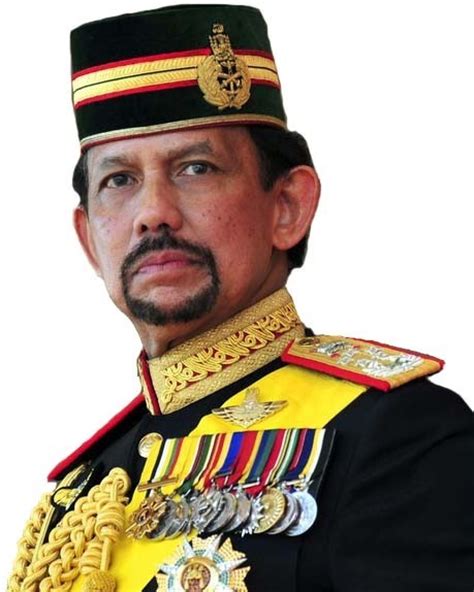
BRUNEI
Hassanal Bolkiah
1967-present
Brunei is a monarchical dictatorship,
under a State of Emergency since 1982. The Sultan allows Brunei
to be the ClA's ears on the Malaysian-lndonesian border. Bolkiah
was involved with the infamous Nugan Hand Bank of Australia, a
1960s-70s CIA front for South East Asian drug operations and money
laundering. The Sultan lives in a palace that may have cost as
much as a billion dollars, while over 90% of his subjects live
in abject poverty. Those who protest such inequalities don't fare
well with the authorities.

BOLIVIA
Hugo Banzer
1971-1978
The US government supported the
1971 coup led by General Hugo Banzer that toppled President Juan
José Torres of Bolivia. Torres had displeased Washington
by convening an "Asamblea del Pueblo" (People's Assembly
or Popular Assembly), in which representatives of specific proletarian
sectors of society were represented (miners, unionized teachers,
students, peasants), and more generally by leading the country
in what was perceived as a left wing direction. After Banzer took
power, the US provided extensive military and other aid to the
Banzer dictatorship as Banzer cracked down on freedom of speech
and dissent, tortured thousands, "disappeared" and murdered
hundreds, and closed labor unions and the universities. Torres,
who had fled Bolivia, was kidnapped and assassinated in 1976 as
part of Operation Condor, the US-supported campaign of political
repression and state terrorism by South American right-wing dictators.

BRAZIL
Humberto Branco
1964-1967
Brazilian President Joao Goulart
sought to trade with communist countries, supported the labor
movement, and had limited the profits multi-national corporations
could take out of the country. The United States encouraged senior
Brazilian military officers to seize power and to back army chief
of staff General Humberto de Alencar Castelo Branco as coup leader.
General Branco led an April 1964 coup of the constitutional government
of President Goulart and was installed as first president of the
military regime, immediately declaring a state of siege and arresting
more than 50,000 political opponents within the first month of
seizing power, while the US government expressed approval and
re-instituted aid and investment in the country.
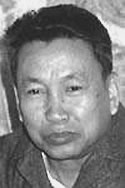
CAMBODIA
Pol Pot
1976-1979
The bombing of Cambodia by the
US from 1969 to 1972, left 600,000 civilians dead, millions of
refugees, tens-of-thousands dying from disease and starvation,
and the Cambodian economy and culture in ruins. Cambodians blamed
the US and the puppet regime of Lon Nol for the country's destruction,
and gradually sided with the guerrilla army of the Khmer Rouge
led by Pol Pot, which finally defeated Lon Nol, and took power
in April, 1975. Once in power, Pol Pot emptied the cities, forcing
the people into the countryside. Virtually all educated people
were killed and more than 1.5 million people perished in this
"holocaust". Only when the Khmer Rouge was ousted by
Vietnam in 1979, did the terror stop. Washington continued to
take steps to preserve the Khmer Rouge as a counter force to the
Vietnamese. International relief agencies were pressured by the
US to provide food and humanitarian assistance to the Khmer Rouge,
which had fled to Thailand.
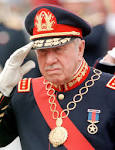
CHILE
Augusto Pinochet
1973-1990
Augusto Pinochet assumed power
in Chile following a United States-backed coup in 1973 that overthrew
the democratically-elected socialist government of President Salvador
Allende and ended 150 years of civilian rule. The bloody coup,
during which Allende took his own life, was carefully managed
by the CIA. Tens of thousands of Chileans were tortured, killed,
and exiled during Pinochet's rule. Despite Chile's human rights
record, the U.S. government continued to support Pinochet with
international loans. Even the state-sponsored assassination of
Chile's former Ambassador to the U.S., Orlando Letelier, in the
United States, did not convince the U.S. to break with Pinochet.
Under the influence of the free market-oriented neoliberal economist
Milton Friedman and his "Chicago Boys", Pinochet's military
government implemented economic liberalization, banned trade unions
and privatized social security and hundreds of state-owned enterprises.
Economic inequality dramatically increased. His fortune grew considerably
during his years in power through dozens of bank accounts secretly
held abroad and a fortune in real estate. He was later prosecuted
for embezzlement and tax fraud.
In a 1988 plebiscite, 56% voted against Pinochet's continuing
as President, which led to democratic elections for the presidency
and Congress. After stepping down in 1990, Pinochet continued
to serve as Commander-in-Chief of the Chilean Army until 10 March
1998, when he retired and became a senator-for-life.
Pinochet was arrested under an international arrest warrant on
a visit to London on 10 October 1998, but was never convicted
and never served time in jail.
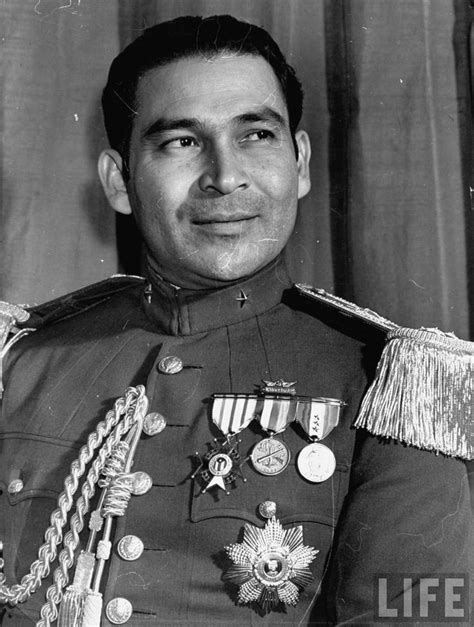
CUBA
Fulgencio Batista
1952-1959
Cuban Army Sergeant Fulgencio Batista
seized power in a 1952 coup. His regime was quickly recognized
by President Dwight Eisenhower. With the support of Batista, Mafia
boss Meyer Lansky developed Havana into an international drug
port. Cabinet offices were bought and sold and military officials
made huge sums on smuggling and vice rackets. Havana became a
fashionable hot spot where America's rich and famous drank and
gambled with mobsters. In 1953, Fidel Castro led an armed group
of rebels in a failed uprising. Castro temporarily fled the country
and Batista struck back with a vengeance. Freedom of speech was
curtailed and subversive teachers, lawyers and public officials
were fired from their jobs. Death squads tortured and killed thousands
of "communists". Batista was assisted in his crackdown
by Meyer Lansky and other members of organized crime who believed
Castro would jeopardize their gambling and drug trade. Batista
was finally overthrown by Fidel Castro in 1959.
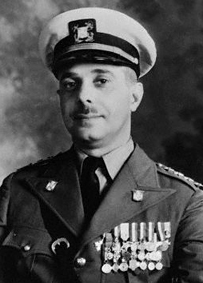
DOMINICAN REPUBLIC
Rafael Trujillo
1930-1961
The US occupied the Dominican Republic
in 1916 and created the National Guard to put Rafael Leonidas
Trujillo into power. As dictator of the Dominican Republic for
30 years, Trujillo had a penchant for self-adulation, and put
his personal stamp on everything. Trujillo won the 1930 presidential
election with more votes than there were registered voters, but
because he was anti-communist, Washington was happy. He invoked
anti-communism to justify mass deportations, torture and summary
executions. Workers who asked for wage increases were labeled
communists, and shot on the spot, as were farmers who tried to
stop Trujillo from confiscating their land. He eventually controlled
over 80% of the country's sugar plantations, using slave labor
provided by neighboring Haiti to keep profits high. In 1937, he
decided to blame depressed sugar prices on the Haitian workers,
and massacred 20,000 them. Trujillo was finally assassinated by
the CIA in 1961 after he attempted to have President Romulo Betancourt
of Venezuela murdered because of his criticism of Trujillo's brutal
regime.

EGYPT
Hosni Mubarak
1981-2011
Hosni Mubarak assumed the presidency
of Egypt after the assassination of Anwar Sadat. Mubarak was Egypt's
longest-serving ruler in modern times, his dictatorship lasting
30 years.
Throughout his years in power, he maintained the unpopular policy
of peace with Israel and accommodation with the West. His government
was the frequent target of domestic opposition, ranging from the
Muslim Brotherhood to secular and liberal dissidents. His ties
with the United States and Israel drew criticism from across the
region, especially during the 2006 Israeli war in Lebanon and
Israel's Gaza offensive in 2008-2009. Domestic opponents accused
Washington of turning a blind eye to human rights abuses, corruption
and the Mubarak regime's failure to enact badly needed reforms.
The U.S. foreign aid of more than $1 billion during Mubarak's
reign was second only to U.S. foreign aid to Israel.
Mubarak stepped down after 18 days of demonstrations during the
Egyptian Revolution of 2011, and was ordered to stand trial on
charges of negligence for failing to halt the killing of peaceful
protesters during the revolution. In 2012, an Egyptian court sentenced
Mubarak to life imprisonment, but he was acquitted by Egypt's
top appeals court and was released in 2017.
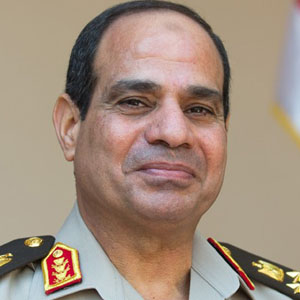
EGYPT
Abdel Fattah el-Sisi
2014-present
General Abdel el-Sisi trained in
the United Kingdom and the United States Army War College. After
the Egyptian revolution of 2011 and election of Mohamed Morsi
to the Egyptian presidency, Sisi was appointed Minister of Defence
by Morsi in 2012.
In 2013, as Commander-in-Chief of the Egyptian Armed Forces, Sisi
was involved in the military coup that removed Morsi from office.
He dissolved the Egyptian Constitution of 2012 and proposed a
new constitution and new parliamentary and presidential elections.
The Sisi government cracked down on the Muslim Brotherhood and
its Islamist supporters and later on opponents. In 2013, police
carried out the Rabaa massacre, killing hundreds of civilians
and wounding thousands.
Sisi retired from the military and ran and won the presidency
in 2014. Sisi's government has given the Egyptian military unchecked
power, and many have labeled him a dictator.
In the 2018 presidential election, Sisi, facing only nominal opposition,
won reelection.
U.S. foreign aid to Egypt ($1.6 billion in 2013) is second only
to U.S. foreign aid to Israel ($3 billion in 2013).
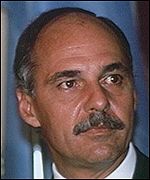
EL SALVADOR
Alfredo Cristiani
1989-1994
President Alfredo Cristiani was
a member of El Salvador's rich coffee oligarchy - the " Fourteen
Families". His presidency in 1988 represented the beginning
of a 20-year period of ARENA Party rule. He was closely linked
to right-wing death-squad leader and ARENA founder Roberto D'Aubuisson,
who planned and ordered the assassination of the Archbishop Oscar
Romero. It is estimated that more than 70,000 civilians were killed
by the Salvadoran military and D'Aubisson's death squads.
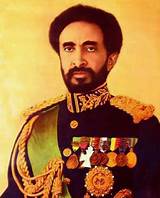
ETHIOPIA
Emperor Halie Salassie
1930-1974
Under Emperor Halie Selassie's
long rule, Ethiopia remained in the dark ages. Just after his
overthrow in 1974, the annual per capita income was $90, the literacy
rate was 7% and Ethiopia was the poorest nation in Africa. Under
Selassie, Ethiopia received more US aid than any other African
country. When Selassie faced an uprising in the province of Eritrea,
the US sent advisors and arms to help him smash the revolt. In
return for our support, Selassie provided the United States with
a naval base in the Red Sea.

GERMANY
Adolf Hitler
1933-1945
Adolf Hitler was elected German
Chancellor in 1933. Hitler initiated World War II, was responsible
for killing 20 million civilians and prisoners of war, as well
as the deaths of almost 30 million soldiers and civilians during
military action, and planned the holocaust of European Jews. Under
a presidential order, US companies were licensed to trade with
the Nazis. As German bombs fell on London and Nazi tanks rolled
over US troops, ITT was designing and building Nazi phone and
radio systems as well as supplying crucial parts for German bombs.
In addition to ITT, other US companies traded with the Third Reich
including General Motors, DuPont, Standard Oil of New Jersey,
and the Chase National Bank. The same companies that traded with
Hitler were supplying the US with its armaments, and some corporate
leaders threatened to withdraw their support if President Roosevelt
exposed them. Henry Ford was a good friend of Hitler's. His book
'The International Jew' had Inspired Hltler's Mein Kampf.

GREECE
George Papadopoulos
1967-1974
In 1967, a military coup headed
by ex-Nazi George Papadopoulolis, overthrew the democratic government
of Andreas Papandreou. Papadopoulos had been on the CIA payroll
for 15 years when he came to power, and during WWll he was a captain
in the Nazi Security Battalions, whose main purpose was to catch
members of the Greek Resistance.
Papadopoulos' regime imposed martial law. The press was subjected
to harsh censorship. Thousands of the regime's political opponents
were thrown into prison or exiled.
The military government dissolved political parties and clamped
down on left-wing organizations and labor unions. Torture of political
prisoners in general, and communists in particular, was carried
on, including severe beatings and the pulling out of fingernails.
Papadopoulos excused these actions as necessary to save the nation
from a "Communist takeover." The regime was supported
by the United States because of its staunchly anti-Communist stance.
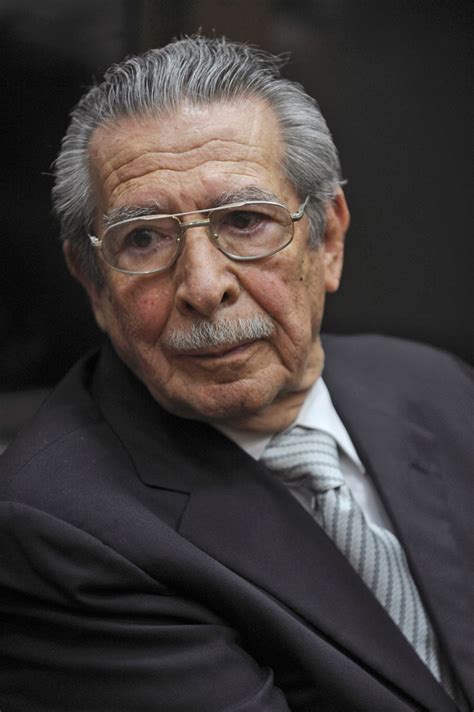
GUATEMALA
Efrain Rios-Montt
1982-1983
In 1954, the U.S. government executed
a CIA-led coup that overthrew the democratically-elected government
of President Jacobo Árbenz, at the behest of the United
Fruit Company, the single largest land owner in Guatemala, and
installed the first of a line of brutal right-wing dictators.
In 1982, General Efrain Rios-Montt became military dictator of
Guatemala. President Ronald Reagan called Rios-Montt "a man
of great personal integrity and commitment, who wants to improve
the quality of life for all Guatemalans and to promote social
justice." In fact, during his short but brutal reign, Rios-Montt
was accused of terrible human-rights abuses, targeting the indigenous
population with widespread massacres, rapes and torture, in what
has been called a Guatemalan genocide.
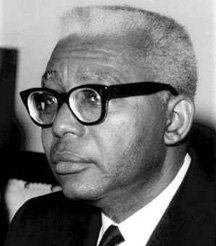
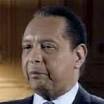
HAITI
Francois Duvalier
1957-1971
Jean-Claude Duvalier
1971-1986
In 1957 Francois "Papa Doc"
Duvalier became Haiti's President-For-Life, establishing a strategic
relationship with the US that lasted until 1971, when he was succeeded
by his son Jean Claude "Baby Doc" Duvalier. During the
30 years that they ruled with an iron hand, 60,000 Haitians were
killed and countless more were tortured by the Duvaliers' Tonton
Macoutes death squads. While Haiti became the poorest country
in the Western Hemisphere, the Duvaliers enriched themselves by
stealing foreign aid money. Baby Doc made Haiti into a trans-shipment
point for Colombian cocaine. As long as Papa and Baby Doc were
anti-communists, they could do no wrong in the US government's
eyes. Their regime finally ended in 1986, when Baby Doc fled angry
mobs of Haitians for asylum in France, with a fortune estimated
at $400 million. It has been estimated that under Baby Doc's rule
40,000 Haitians were murdered.
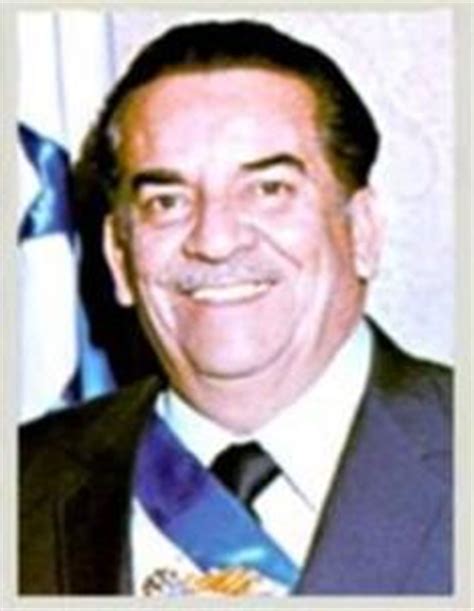
HONDURAS
Roberto Suazo Cordova
1982-1986
Honduras was the original "Banana
Republic", its history inextricably intertwined with that
of the US-based United Fruit Company. By 1985, Honduras was getting
$231 million in U.S. aid, primarily because President Suazo Cordova,
working with the US Ambassador and the Honduran military, allowed
Honduras to become a training center for U.S. funded Nicaraguan
contras. The Reagan Administration claimed ignorance of these
human rights violations. Many high ranking government and military
personnel during and after Suazo's term were drug traffickers.

INDONESIA
Muhammad Suharto
1967-1998
In 1965, Indonesian President Muhammad
Sukarno was overthrown in a CIA-backed coup by General Muhammad
Suharto and other senior military officers. Indonesian government
forces with collaboration of some civilians perpetrated mass killings
over many months. The CIA acknowledged that the massacres ranked
as one of the worst mass murders of the 20th Century. Estimates
of the number of civilians killed range from a half million to
three million. The US had detailed, ongoing knowledge of the mass
killings, and provided the Indonesian army with thousands of names
of Sukarno supporters and other leftists, and that the US officials
then checked off from their lists those who had been murdered.
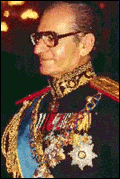
IRAN
Mohammad Reza Pahlavi
1953-1979
The 1953 Iranian coup overthrew
the democratically-elected government of Iranian Prime Minister
Mohammad Mosaddegh, orchestrated by the intelligence agencies
of the United Kingdom (MI6) and the United States (CIA). The Shah
(Mohammad-Reza Shah Pahlavi) transitioned from a constitutional
monarch to a dictator, relying heavily on United States government
support to hold on to power until his own overthrow in February
1979.

MOROCCO
King Hassan II
1961-1999
King Hassan ll of Morocco lived
in absolute luxury, while the unemployment rate in Morocco was
over 20%, and 95% of the population lived in abject poverty. In
1975, Hassan took his nation into a war in the Western Sahara.
Although the International Court of Justice ruled that Morocco
has no historical claims to the territory, the US continued to
back Hassan diplomatically and financially in his war to annex
the area. The US also took an active role in stopping coup attempts
against the King. During the Cold War, Hassan allied Morocco with
the United States. There were close and continuing ties between
Hassan's government and the CIA. The period from the 1960s to
the 1980s was labeled the 'years of lead' and saw thousands of
dissidents jailed, tortured, exiled or forcibly disappeared and
killed.

NICARAGUA
Anastasio Somoza Garcia
1937-1956
Anastasio Somoza Debayle
1967-1979
The U.S. Marines invaded Nicaragua
in 1912, and stayed until 1933, fighting but never defeating the
revolutionary Augusto Sandino. They created the Nicaraguan National
Guard and installed Anastasio Somoza Garcia in power. Then Sandino,
who had signed a truce and put down his arms, was assassinated
by Somoza. President Franklin Roosevelt said, "Somoza may
be a son-of-a-bitch, but he's our son-of-a-bitch." Corruption,
torture, and wholesale murder of dissidents continued for 45 years
under two generations of Somozas, for after Somoza Garcia was
gunned down in the streets in 1956, his son Anastasio Somoza Debayle
took control. The Somozas plundered Nicaragua and became millionaires.
The younger Somoza, made $12 million a year buying the blood of
his people and selling it abroad at a 300% mark-up. In 1972 after
an earthquake killed and wounded hundreds of thousands of Nicaraguans,
Somoza had his National Guard seize $30 million in international
relief supplies and sold them to the highest bidder. Near the
end of his reign, he aerially bombed his own capital to stay in
power, but he was overthrown in 1979 by a rebel group who called
themselves the Sandinistas, after the revolutionary hero his father
had slain.

NIGERIA
Sani Abacha
1993-1998
General Sani Abacha was a corrupt
and repressive dictator supported by Nigeria's oil wealth. Shell
Oil provides most of the country's wealth, extracting oil from
the Ogoniland region, causing severe environmental destruction
in the process. More than 700 Ogoni environmentalists protesting
the destruction of their way of life, were executed. In November
1995, environmental leader Ken Saro-Wiwa and 8 associates were
hanged despite an international outcry. Shell supported Abacha's
policies by its silence. Despite an outcry that Nigerian oil be
boycotted, the US government refused to do so.
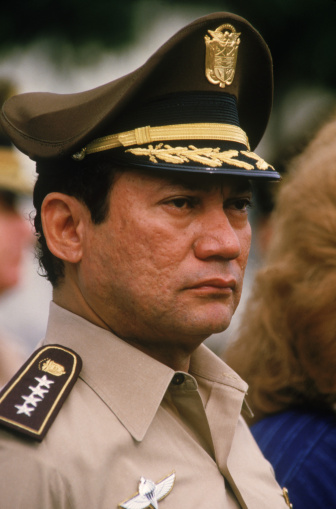
PANAMA
Manuel Noriega
1983-1989
General Manuel Noriega became commander-in-chief
of the National Guard in Panama in 1983, and for the next six
years was more powerful than the President. He was the kind of
ruthless leader the US favored in the rest of Central America.
Noriega was collecting $100 thousand a year as a CIA asset. Noriega's
drug dealing was revealed by a 1975 DEA investigation. During
the Reagan era, Noriega collaborated with Oliver North on covert
actions against Nicaragua, training contras and providing a transshipment
point for CIA supported operations that flew weapons to the contras
and cocaine into the US. But when he fell foul of the US because
he failed to support their plan to invade Nicaragua -- the U/S.
withdrew aid and imposed sanctions.
When Noriega annulled Panama's 1989 elections, citing CIA interference,
the U.S. under George HW Bush invaded Panama in December 1989,
and removed Noriega. He was taken prisoner, stood trial in Miami
on charges of drug trafficking and was sentenced to 40 years'
imprisonment.
The invasion of 26,000 American troops led to over 4,000 Panamanian
deaths and installed a regime with similar close links to drugs,
plus a willingness to alter Panama Canal treaties to serve US
interests.
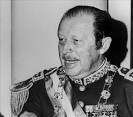
PARAGUAY
Alfredo Stroessner
1954-1989
Alfredo Stroessner seized power
in Paraguay in 1954. Stroessner was a great admirer of Nazism,
and this showed not only in the refuge he offered to many Nazi
war criminals, such as Joseph Mengele, but also in his ruthless
methods.
From the Nazis the Paraguayan military learned the art of genocide.
The native Ache Indians were in the way of American and European
corporations who planned to exploit the nation's forests, mines,
and grazing lands. The Indians were hunted down, parents killed,
and children sold into slavery. Survivors were herded into reservations
headed by American fundamentalist missionaries, some of whom had
participated in the hunts.
Between 1962 and 1975, Paraguay received $146 million in U.S.
aid. In 1971, high ranking members of the regime were implicated
in the Marseilles drug ring, with Paraguay their transfer point
for shipments from France to the US. After a 1989 coup, Stroessner
took refuge in Brazil.
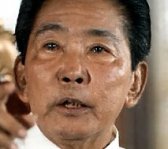
PHILIPPINES
Fernando Marcos
1965-1986
Ferdinand Marcos was a Nazi collaborator.
Despite his record as murderer, fake WWll hero and Nazi agent,
he was elected Philippine President in 1965. Under Marcos, the
Philippine national debt grew from $2 billion to $30 billion,
but US corporations in the Philippines prospered, perhaps explaining
why the US didn't protest Marcos's imposition of martial law in
1972. The Marcoses enjoyed a luxurious lifestyle, and they salted
away billions of dollars in the course of their US-backed rule
between 1965 and 1986.
The Carter Administration increased military aid to Marcos by
300%, and called him a "soft dictator". By 1977, the
armed forces had quadrupled and over 60,000 Filipinos had been
arrested for political reasons. Yet, in 1981, Vice President George
Bush praised Marcos for his "adherence to democratic principals
and to the democratic processes". Marcos was overthrown in
1986 by followers of Corazon Aquino, widow of an assassinated
opposition leader.
The Philippine government continues to try to recover stolen Marcos'
billions from Swiss bank accounts and other locations - without
success.

PORTUGAL
Antonio Salazar
1932-1968
Antonio de Oliveira Salazar worshipped
Hitler and Mussolini, but after they lost, he joined the Allies
and became a card-carrying member of NATO. However, his secret
police, the PIDE, were much like the Gastapo; concentration camps
were set up for "enemies of the state", news organizations
were merely propaganda machines, and all schools had their lesson
plans carefully monitored by "Big Brother".
In 1970, 30% of the population was illiterate, and the infant
mortality rate was the second worst in Europe. Most of the land
was held by 5% of the population, the vast majority of Portuguese
worked in agriculture, and all union activities were forbidden.
Portugal was the last stronghold of European colonialism. The
U.S. openly backed Portugal's colonial claims, due to the strategic
importance of military bases such as the one in the Portugese
Azores. Salazar died in 1968, after 40 years in power.
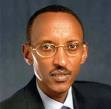
RWANDA
Paul Kagame
1994-present
Rwandan President Paul Kagame fought
in Yoweri Museveni's rebel army, becoming a senior Ugandan army
officer after Museveni's military victories carried him to the
Ugandan presidency. Kagame joined the Rwandan Patriotic Front
(RPF), and the United States supported the RPF in its invasion
of Rwanda from Uganda from 1990 onward. It trained Paul Kagame
and helped cover-up his and the RPF's serial crimes, including
the shooting-down of Rwandan President Juvenal Habyarimana's plane
in 1994, which was the seminal event that initiated the Rwandan
genocide.
The United States and its allies and the UN did not intervene
to stop the bloodshed in Rwanda. They supported Paul Kagame at
all times. And as he was on the road to victory and wanted no
outside interference, the United States and the rest of the "international
community" obliged him, viewing the huge bloodbath as acceptable
"collateral damage". The United States and its allies
deliberately forced the reduction of UN troops as the genocide
escalated.
The Kagame-RPF conquest of Rwanda was followed in 1996 by an invasion
of the Democratic Republic of Congo [the DRC, which had been known
as the Democratic Republic of Zaire through May 1997]. This war
has continued up to the present day, with the collaboration of
Uganda, and the United States, Canada and the Britain.
The numbers of victims of the continuing Kagame-led assault on
the DRC have been immense. A mortality study published in January
2009 estimated the "excess death toll in DR Congo since 1998
to be 5.4 million.
Paul Kagame is possibly the greatest mass murderer alive today.
He is celebrated as the Abe Lincoln of his war-torn country, and
highly regarded and honored in the United States, Britain, and
Canada.
As long as Paul Kagame remains a useful tool of U.S. power in
central Africa, he will remain beyond prosecution.

SAUDI ARABIA
King Abdul Aziz (Ibn
Saud)
1932-1953
King Saud
1953-1964
King Faisal
1964-1975
King Khalid
1975-1982
King Fahd
1982-2005
King Abdullah
2005-2015
King Salman
2015-2017
Prince Mohammad bin
Salman (MbS)
2017-present
Saudi Arabia is an absolute dictatorship
ruled with the iron grip of medieval feudalism. Control over the
lives of Saudi citizens is total and arbitrary. Women have few
rights, and those who are charged with adultery are stoned to
death. Torture is common, and executions by hanging or beheading
are public.
Ever since the modern US-Saudi relationship began in 1945, the
U.S. has been willing to overlook many of the kingdom's more controversial
aspects as long as it kept the oil flowing and supported U.S.
national security policies. Since World War II, the two countries
have been allied because of the Saudi's pro-West stance, its opposition
to communism, maintenance of stable oil prices, support of Saudi
investments in Western economies, and its multi-billion-dollar
purchases of weapons produced by the United States, Britain, France
and Israel.
The hypocrisy is that Western democracies, that are the world's
most vocal advocates for freedom and democracy, support the policies
and actions of one of the most brutal undemocratic regimes in
the world, including its barbaric bombing and immiseration of
Yemen.
Since 2015, the Saudi/UAE/US-coalition has launched over 230,000
airstrikes in Yemen, killing civilians and targeting hospitals,
schools, markets, and camps for the internally displaced.
Over 600,000 civilians have been killed or injured in Yemen since
the coalition began its attacks. The U.S.-backed Saudi-led coalition's
blockade of Yemen has triggered an epidemic of disease and famine
across the country.
When MbS came to power in 2017, he accelerated the siege of Yemen
with the obvious intent to cause a genocidal famine of the resisting
population.
By early 2018, the aerial bombardment of Yemen had destroyed at
least 421,911 houses, 930 mosques, 888 schools, 327 hospitals
and health facilities, while leaving more than 4 million people
displaced.

SPAIN
Francisco Franco
1939-1975
General Francisco Franco, a staunch
conservative, was infuriated when a Republican alliance of socialists,
Marxists, and liberals won Spain's first free elections in 1936,
so he decided to restore order by force. Franco's Nationalists
were losing the civil war, but military support from Hitler, Mussolini,
and the US corporations that backed Hitler, turned the tide in
his favor. Italy and Germany sent trucks to Franco's fascists,
but many more trucks were supplied by Ford, General Motors and
Studebaker. The US claimed neutrality but didn't stop these companies
from aiding Franco. The failure of the US and other democratic
nations to assist Spain's democratic government was ultimately
responsible for Franco's victory in 1939. Under Franco, all political
parties and labor unions were banned, books were burned, and dissenters
were tortured and executed. The US considered Franco a Cold War
ally and sank millions into the country.
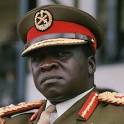
UGANDA
Idi Amin
1971-1979
Idi Amin was a non-commissioned
officer in the British Army in Uganda. Because of his loyalty
to Britain and his strongly anti-communist stance, Amin was picked
by the British to replace the elected Ugandan government in a
1971 coup. Amin brutalized his people with British and US military
aid and with Israeli and CIA training of his troops. The body
count of his friends, the clergy, soldiers, and ordinary Ugandans
rose daily, but the West ignored his cruelty. As he continued
to demand more aid and sophisticated weapons, he finally lost
support. In 1979, his quest for more power led him to invade Tanzania.
In retaliation, he was overthrown by an invading Tanzanian / Ugandan
army. Amin fled to Saudi Arabia, where he lived in a villa outside
Jeddah.

UGANDA
Yoweri Museveni
1986-present
In power in Uganda since 1986,
Yoweri Museveni has been celebrated in the West, but his 30-year
presidency has been marred by human rights abuses, suppression
of political opposition at home, and involvement in the Democratic
Republic of the Congo and other Great Lakes region conflicts.
Museveni's regional strategic alliances date back to the overthrow
of Ugandan dictator Idi Amin. Tutsi refugees from Rwanda and the
Congo joined the rebels from Uganda, overthrew Idi Amin, and brought
Museveni to power. Later some of these troops fought in the Rwandan
civil war, and helped to bring Paul Kagame to power there.
In 1998, Rwanda and Uganda invaded the Democratic Republic of
the Congo (DRC) to overthrow the government. The official reasons
Uganda gave for the intervention were to stop a "genocide"
in the DRC in concert with Rwandan forces.
Troops from Rwanda and Ugandahave plundered the country's rich
mineral resources and timber since 1998.
In 2005, the International Court of Justice in The Hague found
the Ugandan state guilty of plundering natural resources during
its five-year occupation of the northeastern Democratic Republic
of Congo, enriching Ugandan politicians and Congo and Uganda military
brass.
The US aid accounts for almost half of Uganda's national budget,
and Museveni has used the threat of pulling its troops out of
peacekeeping missions in Somalia, Central African Republic, South
Sudan and the Democratic Republic of Congo, as a bargaining chip
to persuade the U.S. to continue supporting him in power.
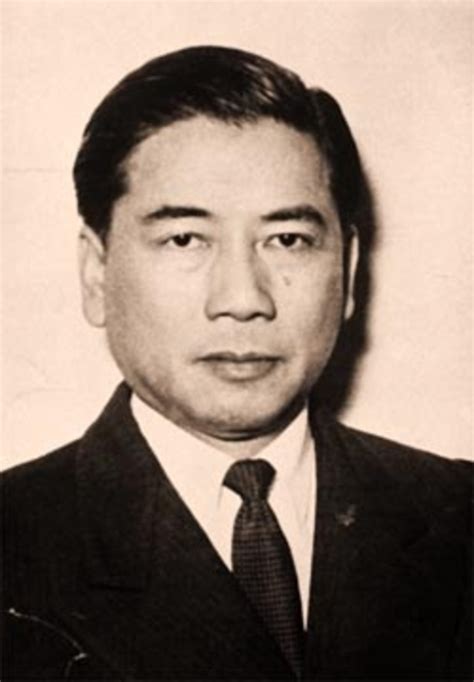
VIETNAM
Ngo Dinh Diem
1955-1963
Ngo Dinh Diem came to power in
a rigged election in 1955. Diem, had once lived in the US and
had connections in Washington because of his anti-communist views.
He founded the Can Lao Party (CLP), a secret police force overseen
by his brother, Ngo Dinh Nhu, and Nhu's wife, Madame Nhu. The
three were notorious for their ineptitude and cruelty. Diem oppressed
the Vietnamese people so badly that many of them turned to the
communists for protection from his ruthless rule. Diem alienated
urban professionals by suppressing all opposition to his regime.
He alienated peasants by canceling local elections, forcing them
off their land and moving them into "agrovilles" surrounded
by barbed wire, that bore a striking resemblance to concentration
camps. In an effort to keep Diem in power, the US tried to persuade
him to make political and military reforms, which he refused.
Diem was finally overthrown and assassinated in 1963.

ZAIRE (DR CONGO)
Mobutu Sese Seko
1965-1997
When Zaire's first elected President,
Patrice Lumumba embraced socialism, US companies feared they might
lose control of Zaire's precious cobalt, copper, and diamonds.
The CIA deposed Lumumba, attempted to assassinate him, and replaced
him with Mobutu Sese Seko who completed the job for the United
States. From 1965, Mobutu had been the US's main man in Central
Africa. Mobutu amassed an estimated $5 billion personal fortune
at his nation's expense. He is perhaps the only world leader who
could pay his national debt from his own bank account. In fact,
there seems to be no division between his pocket and the national
treasury. In 1974, when the US sent $1.4 million to assist troops
fighting a civil war, Mobutu pocketed the entire sum. And no foreign
company sets itself up in Zaire without a tribute to Mobutu. Although
Zaire has more resources than most other countries in the region,
it is the fifth poorest. Malnutrition takes the lives of one-third
of Zaire's children, and one child out of two dies before age
five. But Mobutu has vowed to keep the world safe for democracy
and according to Amnesty International, in the name of anti-communism,
he imprisons and tortures, often without trial, anyone who threatened
his power base. While some members of Congress grumbled about
giving assistance to Mobutu, they continued to reward his work
against communism and his warm reception of American corporations.



































